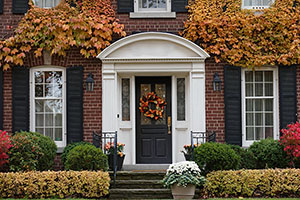 Fixer-upper homes are attractive for many reasons, including a lower sales price, less competition, and a relatively higher potential for resale profit. However, just like any other investment, there is risk involved in it. For one, fixer-uppers, which entail more added costs for repair and remodeling, can quickly become a bad investment. Avoid having your dream house turn into a nightmare by identifying the thin line between a fixer-upper and an outright bad investment. Condition | A fixer-upper requires mostly cosmetic improvements, while a bad investment requires both cosmetic and general structural improvements. Ideal fixer-uppers are those that need mostly cosmetic enhancements: paint jobs, floor refinishing, new lighting fixtures, and remodeled kitchen and bathrooms—everything that appeals to the eye. Certain structural improvements cannot be avoided, such as roofing, the heating and cooling system, and electrical wiring. On the other hand, a bad investment requires much more work, possibly to the structure or foundation, plumbing, or a terrible layout. These problems would require much higher costs than the amount you saved from buying it. Location | A fixer-upper is usually located in a desirable neighborhood, while a bad investment is on a busy street in an unsafe area. One of the strongest indications of a house’s market value is its location. Avoid buying fixer-uppers on a busy street, near a construction site, or in any other disruptive location. A wrong location for a fixer-upper significantly reduces your profit potential. Take note that you can improve only the house, not its position. After-Repair Appeal | A fixer-upper is a home everybody will love (and intend to buy) after you have made all repairs and renovation, while a bad investment is a house that, for some reason, nobody will want to buy, no matter how perfect it looks. There are numerous situations when a fixer-upper could be a bad investment. For example, few people want to buy a house with just two bedrooms in a neighborhood of mostly three- to four-bedroom homes. Or the problem could be location-related: The house may be near a river that overflows during heavy rains. The reason may also involve the layout, such as westward-facing windows that don’t get much sunlight. Avoid buying old houses with problems you cannot fix after a moderate renovation. A fixer-upper versus a bad investment could be hard to distinguish—consider the condition, location, and after-repair appeal. If you have questions about buying or selling real estate, reach out today!
0 Comments
Leave a Reply. |
AuthorA variety of pertinent real estate topics and tips from various authors and contributors. Archives
December 2024
Categorieshow much home can i afford?*
|


